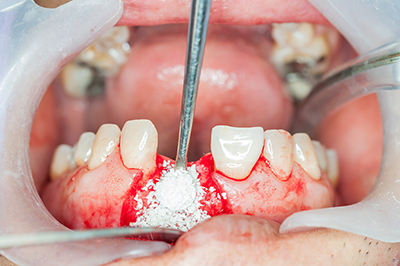BONE GRAFTING
Build a foundation for healthy teeth and implants!
Following a tooth extraction, the bone surrounding the extracted tooth shrinks because the body is unable to reproduce enough replacement bone. This usually leaves a noticeable aesthetic defect. Occasionally, accidents cause bone loss that will affect a smile adversely even when after the area is restored with a bridge.
Although these defects can be reduced with careful extraction of teeth, bone loss is unavoidable unless some form of oral bone graft is placed in site where tooth has been extracted. Even with bone grafting, some bone loss does occur but significantly lower than without grafting.
How does bone grafting work?
Bone harvested from the same individual, other human or cow (bovine) bone is processed for use as a matrix and serves as a scaffolding within the extraction socket into which cells and blood vessels flow and form new bone replacing the original matrix placed to initiate bone formation. This bone formation takes a few months to mature. Most commonly used bone is human or bovine bone but artificial bone also stimulates bone growth in and around the graft.
Types of Oral Bone Grafts:
- Allograft: human bone
- Alloplast: synthetic ceramic or plastic
- Autogenous: patient’s own bone
- Xenograft: cow bone
All of the grafting materials work quite effectively and are manufactured under strict purity and sterility guidelines. They are also placed in the mouth with strict adherence to infection control and sterilization. Bone grafting helps patients get better restorations that are functionally sound and aesthetically pleasing. It can also be used to enhance aesthetics as in plumping of bone where bone is deficient. Very rarely, a graft may not take but it can always be redone with no inherent risks.

